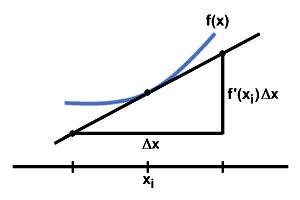Please wait while we process your payment
If you don't see it, please check your spam folder. Sometimes it can end up there.
If you don't see it, please check your spam folder. Sometimes it can end up there.
Please wait while we process your payment

By signing up you agree to our terms and privacy policy.
Don’t have an account? Subscribe now
Create Your Account
Sign up for your FREE 7-day trial
By signing up you agree to our terms and privacy policy.
Already have an account? Log in
Your Email
Choose Your Plan
Individual
Group Discount
Save over 50% with a SparkNotes PLUS Annual Plan!
 payment page
payment page
Purchasing SparkNotes PLUS for a group?
Get Annual Plans at a discount when you buy 2 or more!
Price
$24.99 $18.74 /subscription + tax
Subtotal $37.48 + tax
Save 25% on 2-49 accounts
Save 30% on 50-99 accounts
Want 100 or more? Contact us for a customized plan.
 payment page
payment page
Your Plan
Payment Details
Payment Summary
SparkNotes Plus
You'll be billed after your free trial ends.
7-Day Free Trial
Not Applicable
Renews July 16, 2025 July 9, 2025
Discounts (applied to next billing)
DUE NOW
US $0.00
SNPLUSROCKS20 | 20% Discount
This is not a valid promo code.
Discount Code (one code per order)
SparkNotes PLUS Annual Plan - Group Discount
Qty: 00
SparkNotes Plus subscription is $4.99/month or $24.99/year as selected above. The free trial period is the first 7 days of your subscription. TO CANCEL YOUR SUBSCRIPTION AND AVOID BEING CHARGED, YOU MUST CANCEL BEFORE THE END OF THE FREE TRIAL PERIOD. You may cancel your subscription on your Subscription and Billing page or contact Customer Support at custserv@bn.com. Your subscription will continue automatically once the free trial period is over. Free trial is available to new customers only.
Choose Your Plan
This site is protected by reCAPTCHA and the Google Privacy Policy and Terms of Service apply.
For the next 7 days, you'll have access to awesome PLUS stuff like AP English test prep, No Fear Shakespeare translations and audio, a note-taking tool, personalized dashboard, & much more!
You’ve successfully purchased a group discount. Your group members can use the joining link below to redeem their group membership. You'll also receive an email with the link.
Members will be prompted to log in or create an account to redeem their group membership.
Thanks for creating a SparkNotes account! Continue to start your free trial.
We're sorry, we could not create your account. SparkNotes PLUS is not available in your country. See what countries we’re in.
There was an error creating your account. Please check your payment details and try again.
Please wait while we process your payment

Your PLUS subscription has expired
Please wait while we process your payment
Please wait while we process your payment

Length of a Graph
In addition to two-dimensional areas and three-dimensional volumes, the integral can be used to compute one-dimensional lengths. The idea, once again, is to approximate the length by a sum and to take the limit as the number of summands approaches to infinity.
More precisely, we want to calculate the length of the graph of a function f (x) from x = a to x = b. This length can be expressed as the sum of the lengths of the graph from x = a + (i - 1)Δx to x = a + iΔx, for i = 1,…, n, where Δx = (b - a)/n. We approximate the lengths of these smaller curves by line segments segments with the same endpoints, having lengths of
 |
Making a further approximation, we replace these segments with segments tangent to the graph at x = xi (with endpoints that have the same x-values as before), where xi is some number in the interval [a + (i - 1)Δx, a + iΔx]. The length of one of these new segments is equal to
 = Δx = Δx |
This is illustrated below.

This approximation is valid as Δx approaches zero, since the original segment was a secant line for the curve whose endpoints approach the associated point of tangency. Consult the geometric definition of the derivative for more detail.
Summing the lengths of these tangent segments gives an approximation to the length of the graph over the whole interval:
Δx  |
Taking the limit as n→∞ (where the segments approximating the curve become shorter and shorter), we have the following expression for the exact length of the curve:
  dx dx |
Please wait while we process your payment

